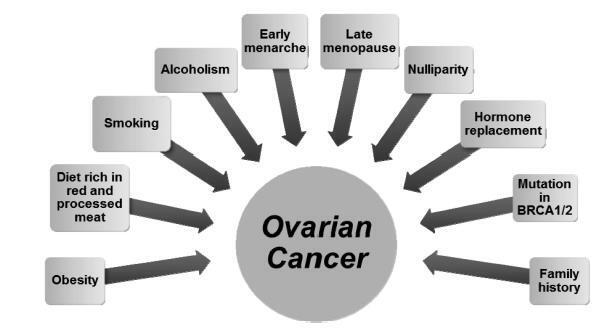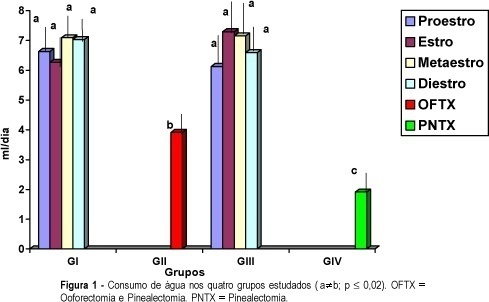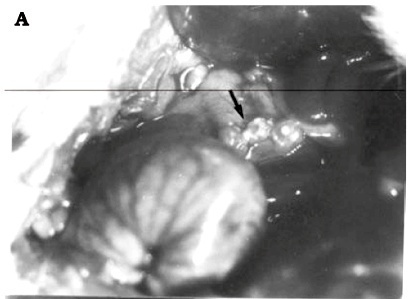Summary
Revista Brasileira de Ginecologia e Obstetrícia. 2017;39(12):676-685
Ovarian cancer is the leading cause of death among gynecologic tumors because in most of the cases (75%), the disease is diagnosed in advanced stages. Screening methods are not available since the disease is rare, and the tested methods, such as ultrasound and CA125, were not able to decrease the mortality rate for this type of cancer. This article discusses the main risk factors for ovarian cancer, and the potential clinical and surgical strategies for the prevention of this disease.

Summary
Revista Brasileira de Ginecologia e Obstetrícia. 1999;21(6):317-321
DOI 10.1590/S0100-72031999000600003
Purpose: to evaluate the effects of oophorectomy and pinealectomy on the ingestion of water and NaCl solution by adults female rats. Methods: forty-eight adult virgin female rats (Wistar EPM 1) weighing 200 g were kept on routine laboratory care and fed water and Purina rat chow ad libitum. The animals were random by divided into four groups: GI - maintained without manipulation as a control group (n = 20); GII - submitted to bilateral oophorectomy (n = 8); GIII - submitted to pinealectomy (n = 12); GIV - submitted to bilateral oophorectomy and pinealectomy (n = 8). All animals were maintained in individual cages. After three weeks the cycle phase was daily determined by vaginal smears and the volume of water and NaCl (0.25 M) solution was daily recorded for approximately three weeks. Results: the main results were: 1) rats submitted to pinealectomy alone presented a greater frequency of the estrous phase, some of these undergoing persistent estrus; 2) the liquid ingestion (water and saline solution) did not alter during the phases of the estrous cycle; 3) rats submitted to oophorectomy presented greater water ingestion and after pinealectomy water consumption returned to normal levels; 4) the oophorectomized and pinealectomized animals and those only oophorectomized showed reduction in the average consumption of saline solution. Conclusions: the data suggest that the ovaries and the pineal gland could have effects on the ingestion of salt and water in adult rats.

Summary
Revista Brasileira de Ginecologia e Obstetrícia. 2002;24(3):187-192
DOI 10.1590/S0100-72032002000300007
Purpose: in order to maintain the gonadal function after oophorectomy, morphofunctional aspects of ovarian autotransplantation to the greater omentum and the best kind of implantation, intact or sliced, were investigated. Methods: forty cycling female Wistar rats were randomly divided into four groups: Group I (n = 5), control - laparotomy; Group II (n = 5), bilateral oophorectomy; Group III (n = 10), intact ovarian autotransplantation to the greater omentum; and Group IV (n = 10), sliced ovarian autotransplantation, both to the greater omentum. The estrous cycle was investigated in the third and sixth postoperative months and histological studies of the ovarian implants were carried out considering: degeneration, fibrosis, inflammatory reaction, angiogenesis, follicular cysts, follicular development and corpora lutea. Results: the animals of Group I preserved the cycling sequence. The rats of Group II remained in diestrus. In Group III, 11 rats remained in diestrus, three presented incomplete cycles and one showed normal cycle. In Group IV, three animals remained in diestrus, eight showed incomplete cycles and four showed normal cycles. The histology of the ovaries of Group III was normal in ten female rats; however, the ovaries of the other five animals presented degeneration. In Group IV, 14 female rats had ovaries with preserved morphological aspect, and signs of degeneration occurred in one. Conclusions: the ovarian autotransplantation to the greater omentum is viable and the sliced form presented better morphofunctional aspects than the intact implants.
